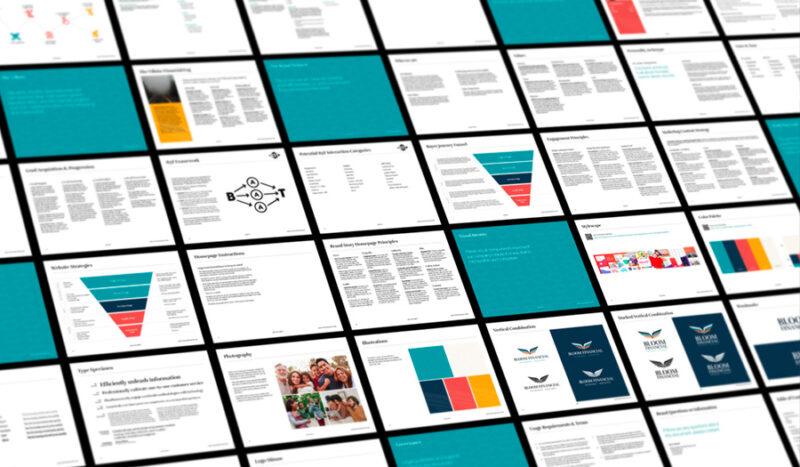Anatomy of Your Brand Architecture
Destroy mediocrity. Be seen, be different, be remembered, and do it all from one single source of truth.

Here is a breakdown of your 45+ page Brand Architecture and the value that each of the sections provide:
Our Hero
Our target audience is the hero of the story we tell, so we want to understand as much as we can about them. This section features a detailed description of your target audience persona(s) with demographic and psychographic info.
The Villain
“If there is no conflict, there is no story.” – Robert McKee. Ultimately, it is the clash between our hero and the obstacle they face that sparks growth, transformation, and the triumph of good over evil, making the story more engaging and memorable.
Every villain causes External, Internal, and Philosophical problems, and we list each of them in detail so we can speak to each of these points when necessary to our target audience.
Our Brand Story
“Stories make music out of noise” – Donald Miller. Every interaction with your target audience should, in some way, pertain to a core story that you are trying to tell. When we stray from our story, we introduce noise, confuse our audience, and sabotage our business goals.
This section begins with a model of the StoryBrand Framework for reference. Then, there are three sections: Setup, Encounter, and Resolution, which detail the 7 parts of your particular Brand’s story:
- Our hero (the customer)
- Has a problem
- And meets a guide (us!)
- Who gives them a plan
- And calls them to action
- That ends in success
- And avoids failure
Our Brand Defined
This is who you are, what you stand for, what differentiates you, and how you want to be perceived in the world.
- Who you are as a brand
- Personality Archetype
- Voice & Tone
- Associations
- Values
This information is critical to being able to present yourself consistently and the details here are incredibly versatile and can be used to plan out entire websites, and generate ideas for marketing and social campaigns.
Competition
It’s important to know your competition and who we are positioning ourselves against as a business, which is why we name them here and describe some key points that should be considered for branding purposes.
Marketing
General marketing guidance and principles are listed here along with some key talking points to help your messaging stay consistent, social media guidance, and points of differentiation.
- B3T Framework
- Potential B3T Interaction Categories
- Buyer Journey Funnel
- Lead Acquisition and Progression Model
- Social Media Content Strategy
Visual Identity
These visual components represent your company’s ideas in a way that is memorable and consistent and contains:
- Stylescape
- Color palette
- Typography
- Type specimen
- Graphic elements
- Design principles
- Photography guidance
Logos
Since we design responsive logos, it’s common to have multiple variations for usage across touchpoints. We plan for things the amateurs haven’t encountered yet, and our logo process is second to none.
Brand Story Website
Principles for how your can be structured to communicate the narrative of your brand story to your audience.
- Page Type Strategies
- Homepage Instructions
- Brand Story Homepage Principles
Governance
This section contains some legal details regarding the document and details on how to contact Vectyr regarding any questions regarding the information in the architecture document.
If you know you need to get something like this in place to be able to run your business like the big brands do and stop wasting valuable time and money on initiatives that completely lack a coherent strategy or plan, then click the button below and let’s talk.
Learn more about Vectyr’s branding process.
